Ecuador are one of the more exciting teams to keep an eye on, with Premier League stars scattered throughout their potential starting XI.
The recent breakthrough of many talented youngsters gives Ecuador optimism for the future, with the nation expected to select many players born in this century to the Copa América.
The coach, Félix Sánchez, has been in charge for just over a year, where results have been positive across the board.
This is his second role in management at the senior level after his first role saw him lead host nation Qatar at the recent FIFA World Cup.
This tactical analysis will discuss whether or not Ecuador have a chance at progressing to the next stage or not, and if they do, the tactics that will allow them to do so.
The analysis will focus on Ecuador’s games since Sánchez took charge in March of last year and how he has been setting his team up in the past few months.
We will predict their starting line-up ahead of the tournament and how they will set up when attacking and defending.
Predicted Starting XI
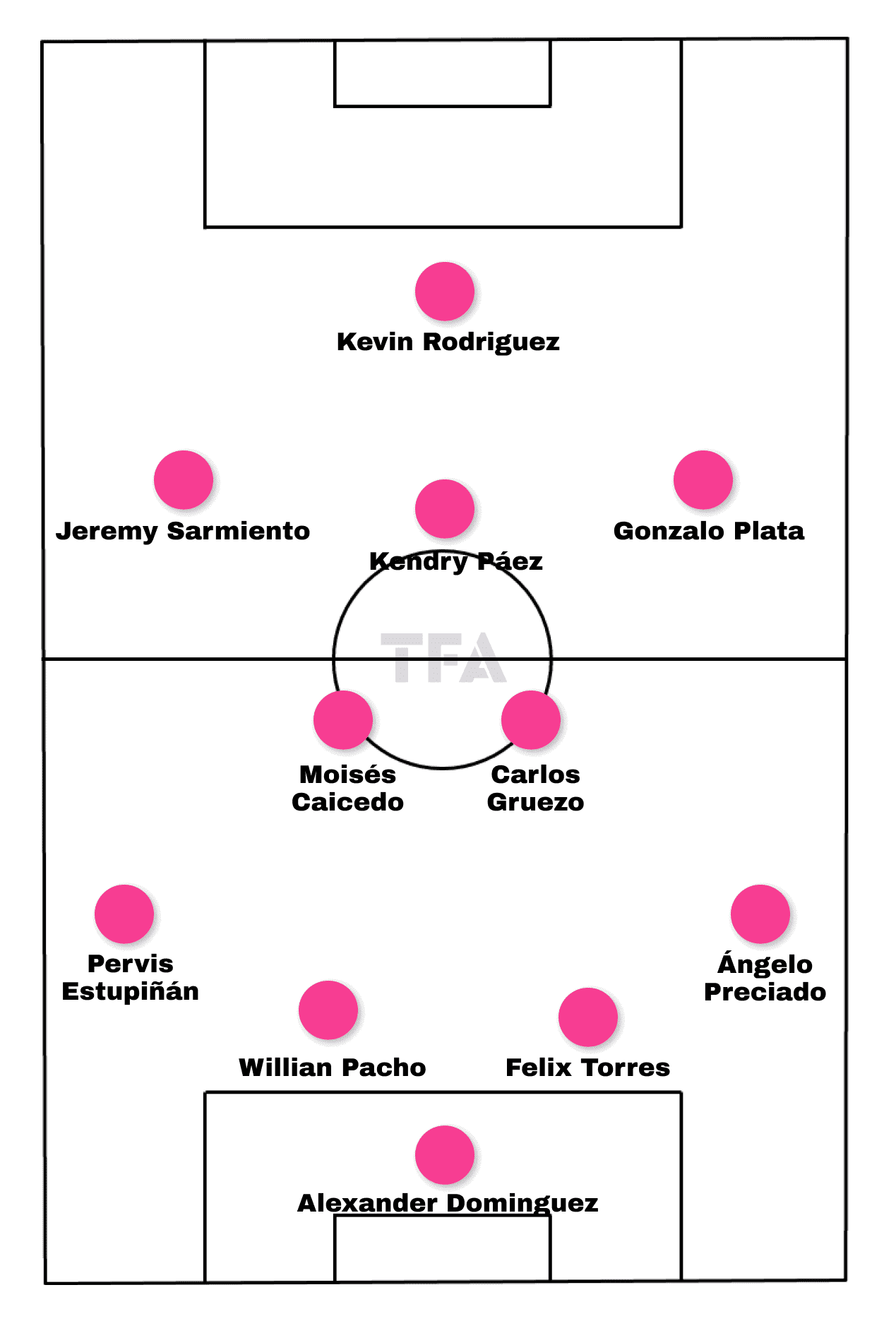
In goal, 37-year-old Alexander Dominguez will hold onto his spot, which he has regularly held for over 10 years.
In front of him, the back four will consist of Czech league winner Preciado at right-back.
He has consistently been involved in a more attacking role for Sparta Praha, which will suit his attacking role required for Ecuador.
The centre-back partnership will consist of Pacho and Torres.
Pacho has the ability to play at left-back, and his ability to defend wide areas will be used often while at left centre-back.
At left-back, Brighton’s Pervis Estupiñán will be an important player at left-back.
However, he has had limited caps under the current manager due to his injury, causing him to miss crucial qualifying and preparation games with his country.
Carlos Gruezo has held down a regular role for Ecuador at the base of midfield for 10 years and will be partnered alongside one of the world’s most expensive midfielders, Moises Caicedo, who will be key to any Ecuador success.
Future Chelsea teammate Kendry Páez will be the creative spark in the attacking midfield role.
The attacking front three is up for debate and could be any of the attacking options called up for the team.
Gonzalo Plata has recently had a run of games for Ecuador and could act as a second striker when defending in a back five, but Angel Mena could be used in the right-wing role as well.
On the left-wing Sarmiento has recently helped Ipswich earn promotion to the Premier League, which also helped him earn back-to-back starts in the most recent March friendlies, which could be enough to see him start when no other player on the left wing has consistently done enough to make the spot their own.
At centre-forward, Enner Valencia’s recent injury has thrown doubts into whether he will be fit enough for the start of the tournament.
If he is, the spot will be his, but Kevin Rodriguez is expected to lead the line in his absence, although his game time for his club has been extremely limited.
We can see the squad is on the younger side, with 11 players aged 23 or under.
Ecuador’s bright, talented youngsters give many reasons for optimism, but the tournament may be coming just too early, where the players haven’t had enough experience at the senior level.
16-year-old Justin Lerma, who will be headed to Borussia Dortmund in a few years’ time, is another example of the quality of talents coming out of Ecuador, but he hasn’t featured at the senior level enough to earn a potential spot on the plane for this year’s competition.
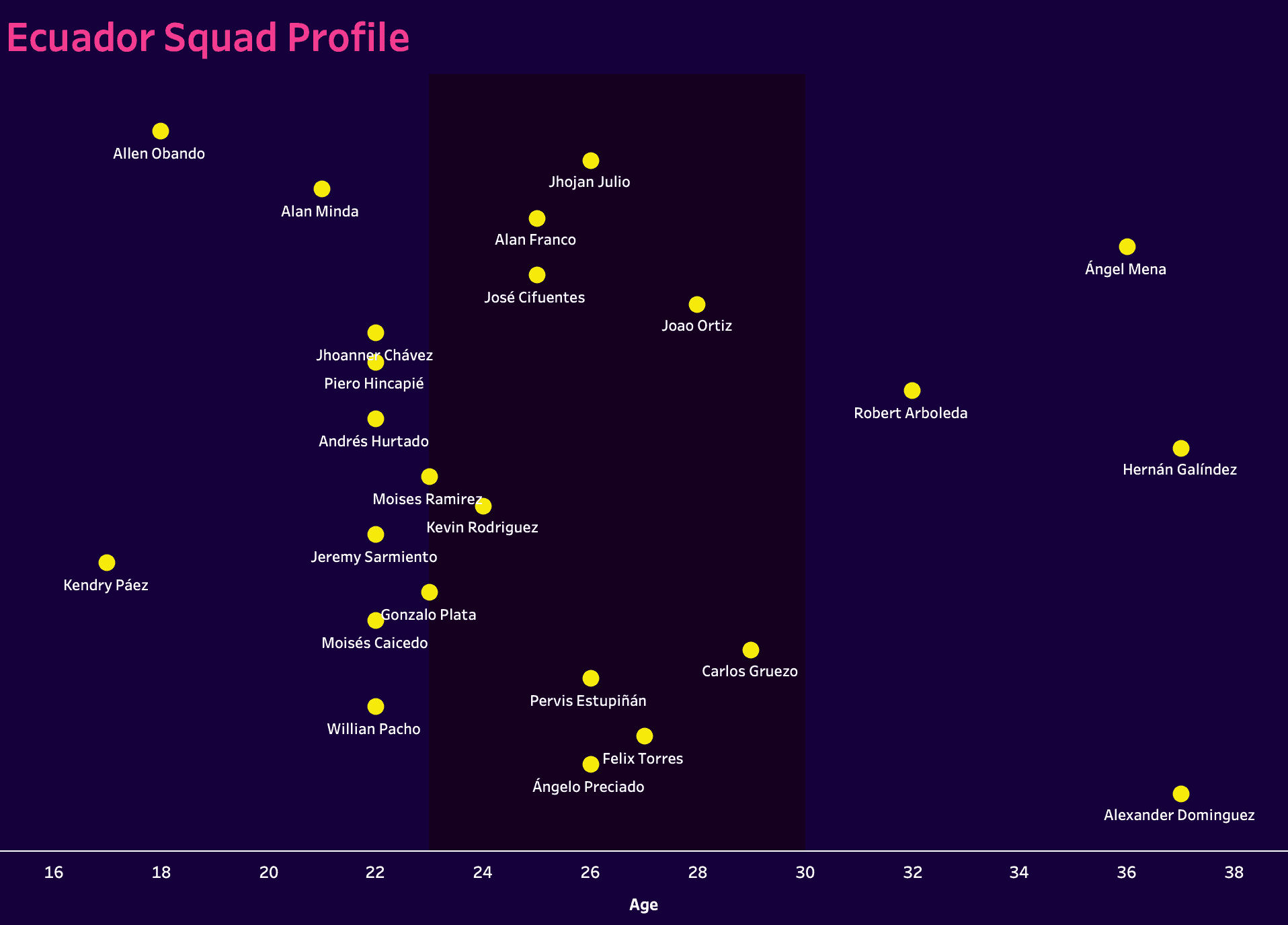
Attacking Phase
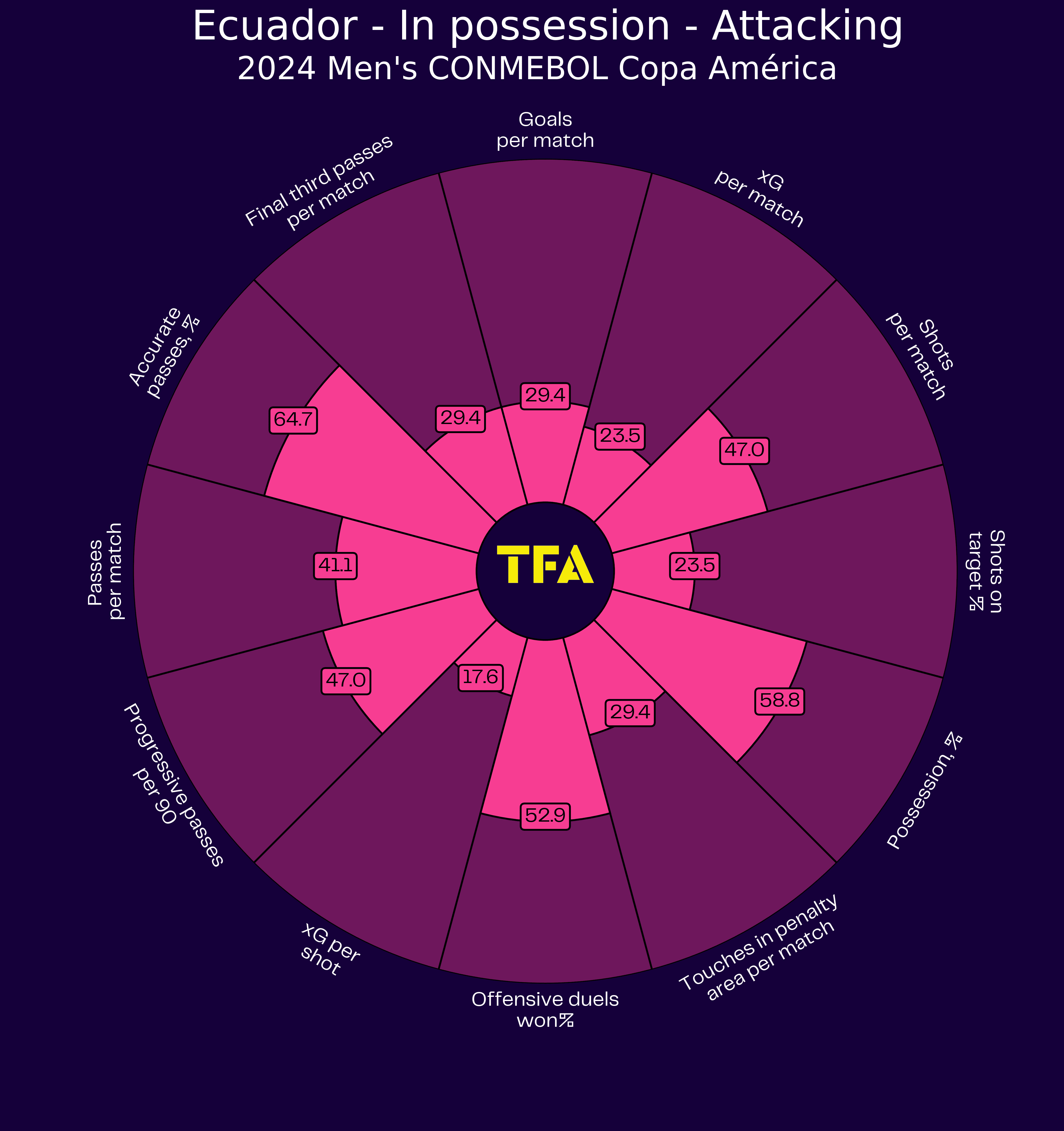
The graphic above shows the statistics when Ecuador have been in possession in the past 12 months.
They have few chances in front of goal per game, highlighted by their low statistics in regard to goals per match, xG per match and shot and the limited number of passes in the final third and touches in penalty area per match.
From this, we can expect Ecuador to be quiet in front of goal and unlikely to dominate games.
On the other hand, Ecuador rank higher in the possession statistics and passing accuracy.
This tells us that ‘La Tri’ will keep the ball through short passing but may be unable to have enough impact in the opposition half.
An investigation is required to understand the inconsistency of these statistics.
From goal kicks, Ecuador will slightly modify its 4-2-3-1 shape.
The ball-side full-back stays deep, helping to act as a passing option and form a back three, while the opposite full-back steps up the pitch to offer height and width to the team.
Once the ball is played into the full-back, we can see the near-side pivot player coming to support along with Páez, the central attacking midfielder.
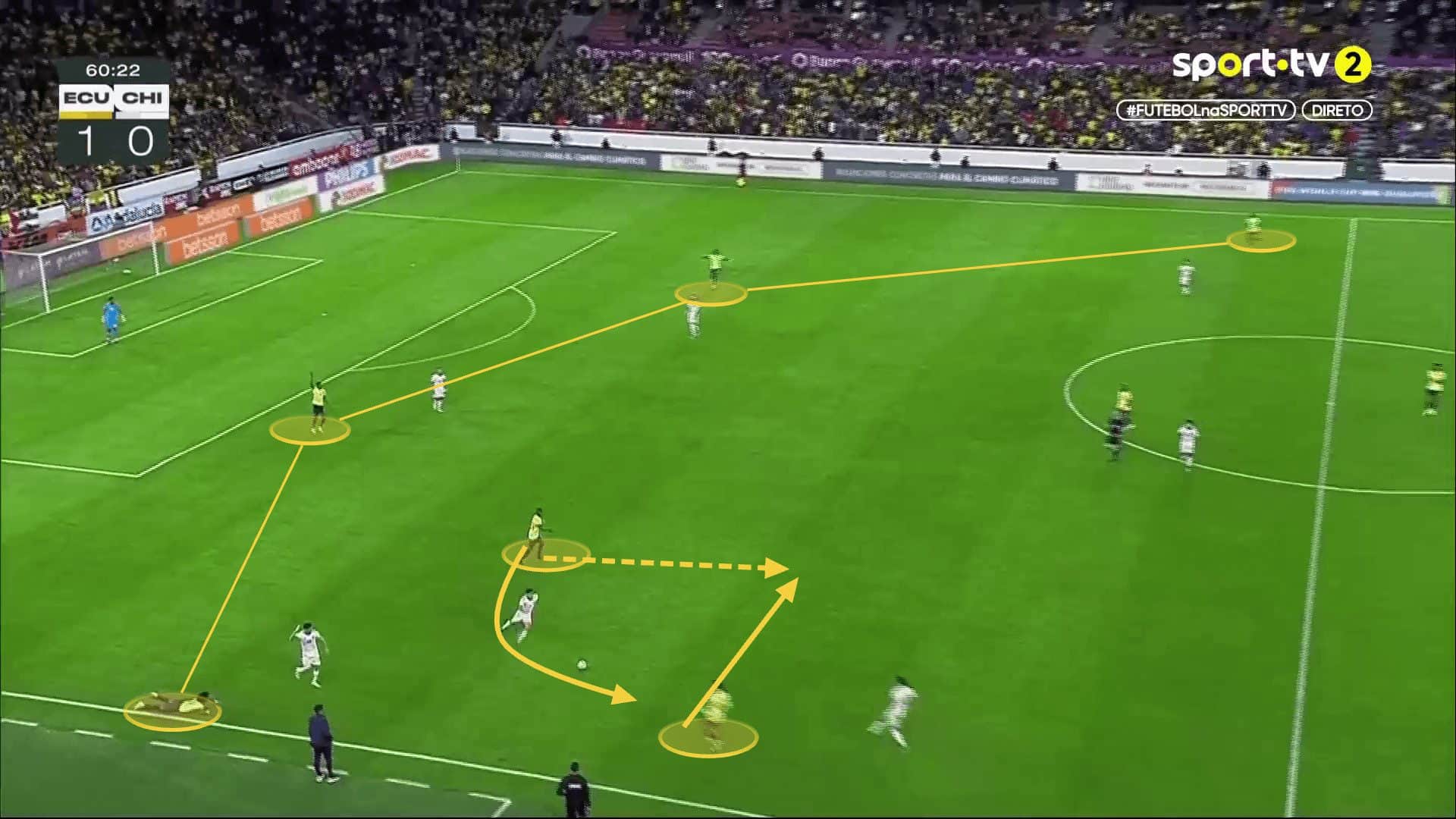
We can see this come into action more clearly in the image below, where the full-back on the opposite side of the pitch to where the ball is moves high to hold the width for his team, while the midfield five all move towards the ball to create overloads on the ball side of the half.
These overloads give Ecuador the opportunity to find a free player in nearby spaces who is then able to drive forward with the ball or execute a forward pass without any disruption.
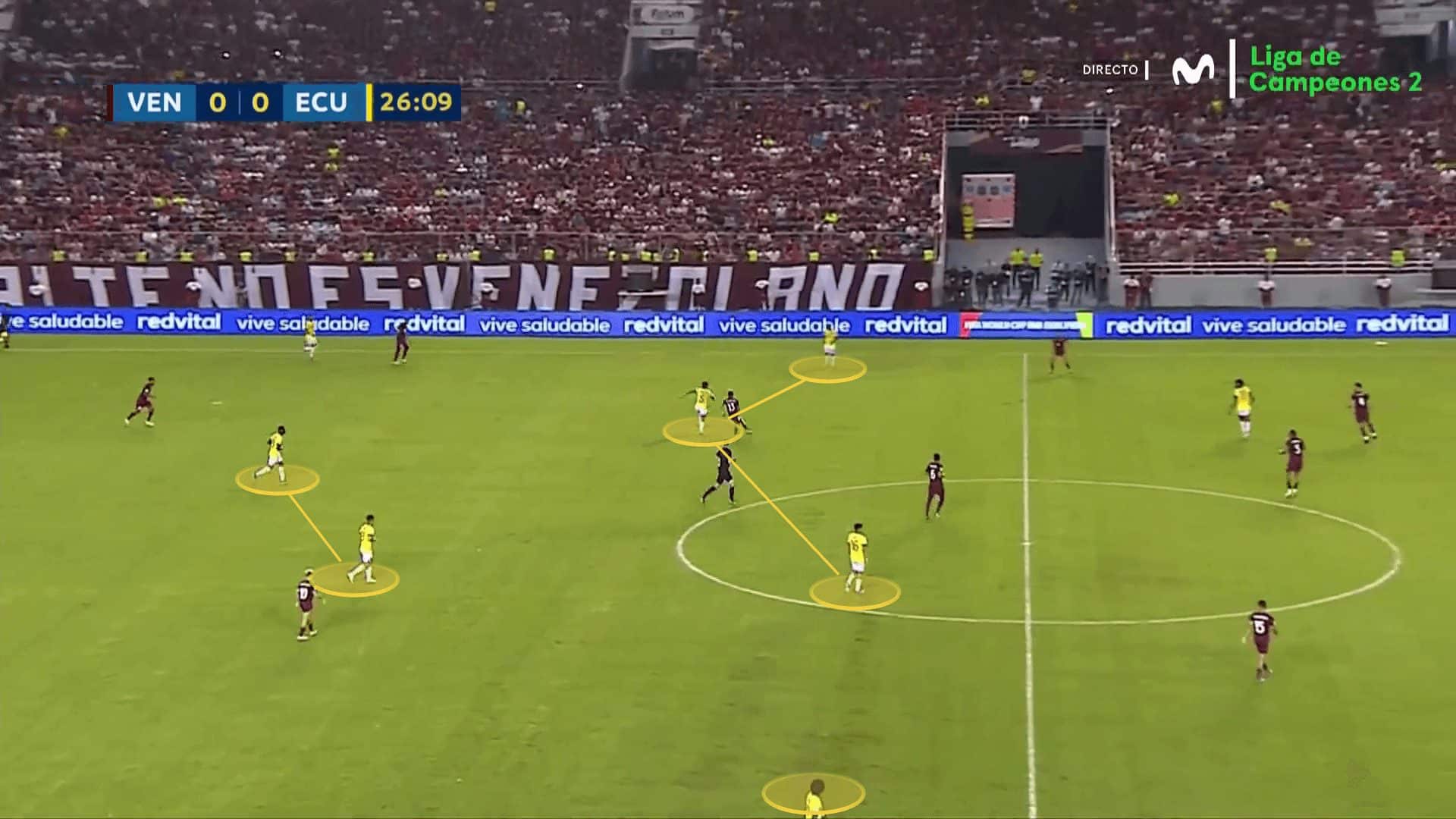
When using the back three during the build-up, Ecuador will attract opponents towards their goal, which will spread opponents apart vertically, creating space between each unit.
These spaces will be exploited by Ecuador’s midfield, who will drift into the spaces, while the goalkeeper has shown a high level of distribution, where he is able to find the players who move into space, both in central areas and out wide.
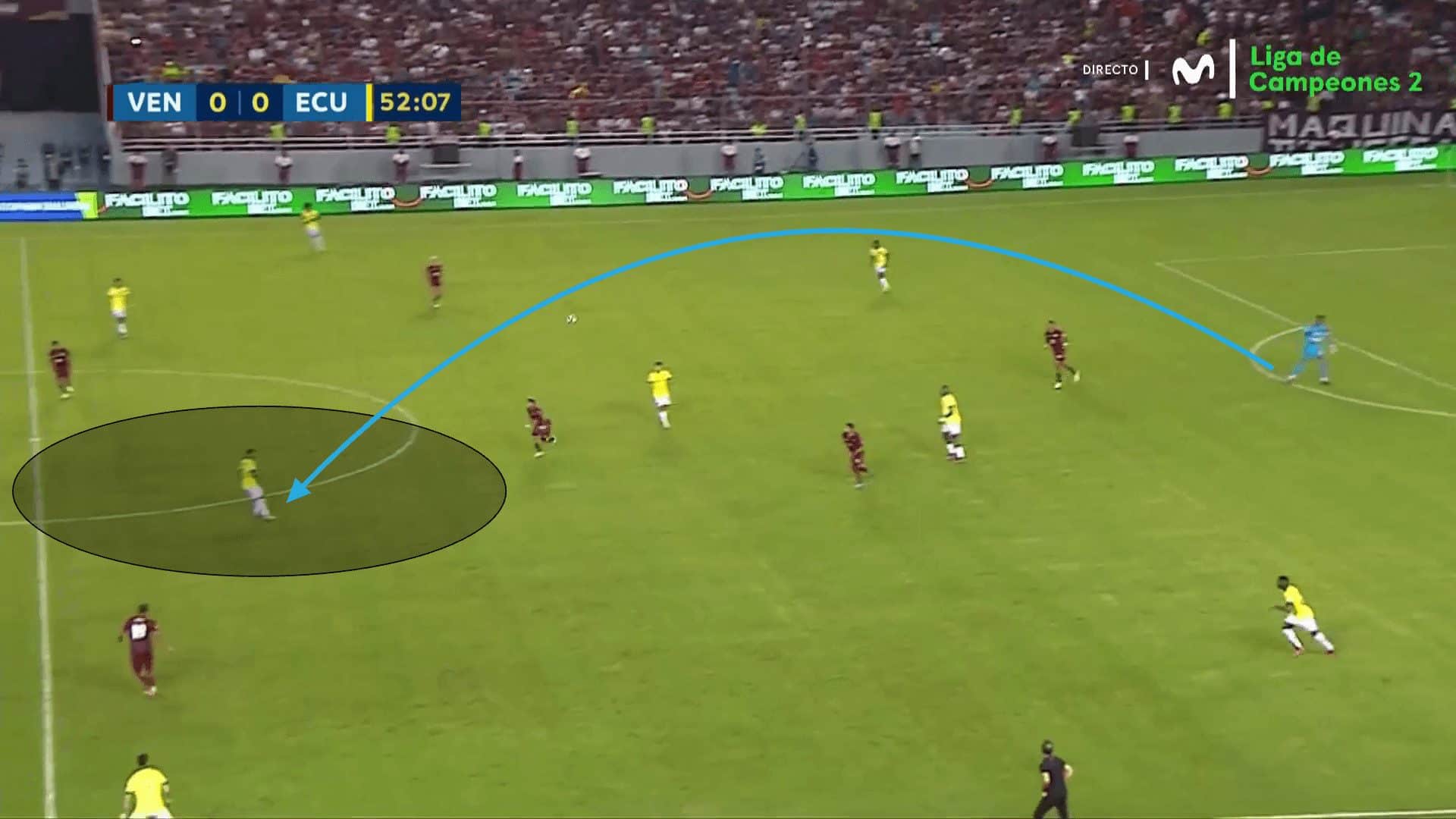
A common pattern we can expect from Ecuador when attempting to progress the play beyond the last line is attracting full-backs into stepping out of position and attacking the space created in the wide channels.
The earlier analysis detailed how the central midfielders will have the opportunity to find time and space in the spaces between the opposition midfield and defence.
When the ball is in these spaces, the wide forwards will drop into deeper areas to drag the full-backs away from the last line, while either the centre-forward or central attacking midfielder attacks those wide areas and has the opportunity to attack the wide centre-backs in 1v1 situations.
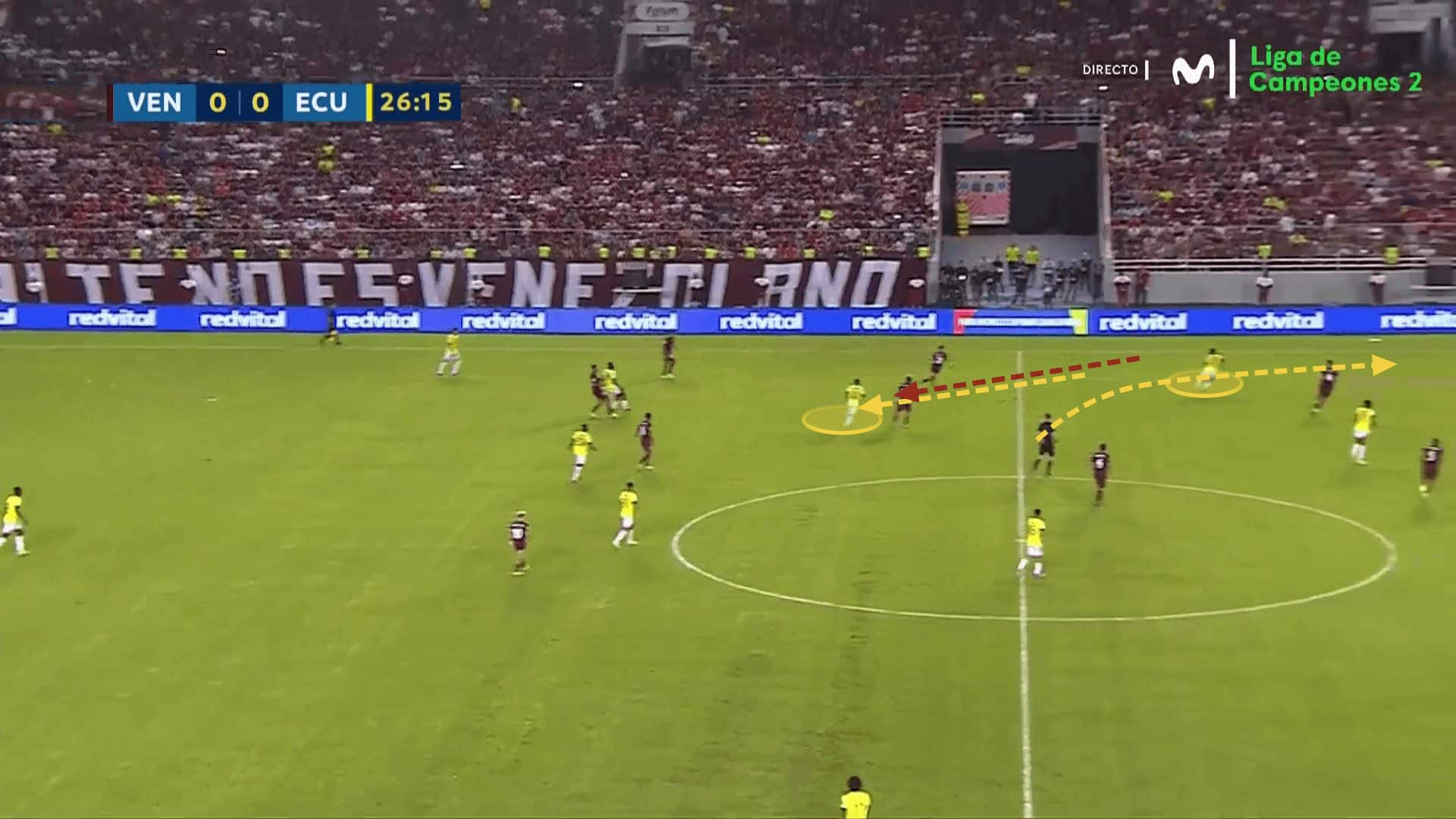
When the ball is in midfield areas, but the player is under pressure and unable to execute the forward pass or carry the ball up the pitch, Kendry Páez will be key in helping his teammates to escape from pressure and progress the ball into the final third.
Páez will make supporting runs towards his teammates to offer a passing option and combine with teammates to escape the pressure.
We can see in the example below Páez smartly uses a bounce pass to give the ball to the forward-facing player to avoid receiving the ball with a defender at his back and unnecessarily taking a risk and losing the ball.
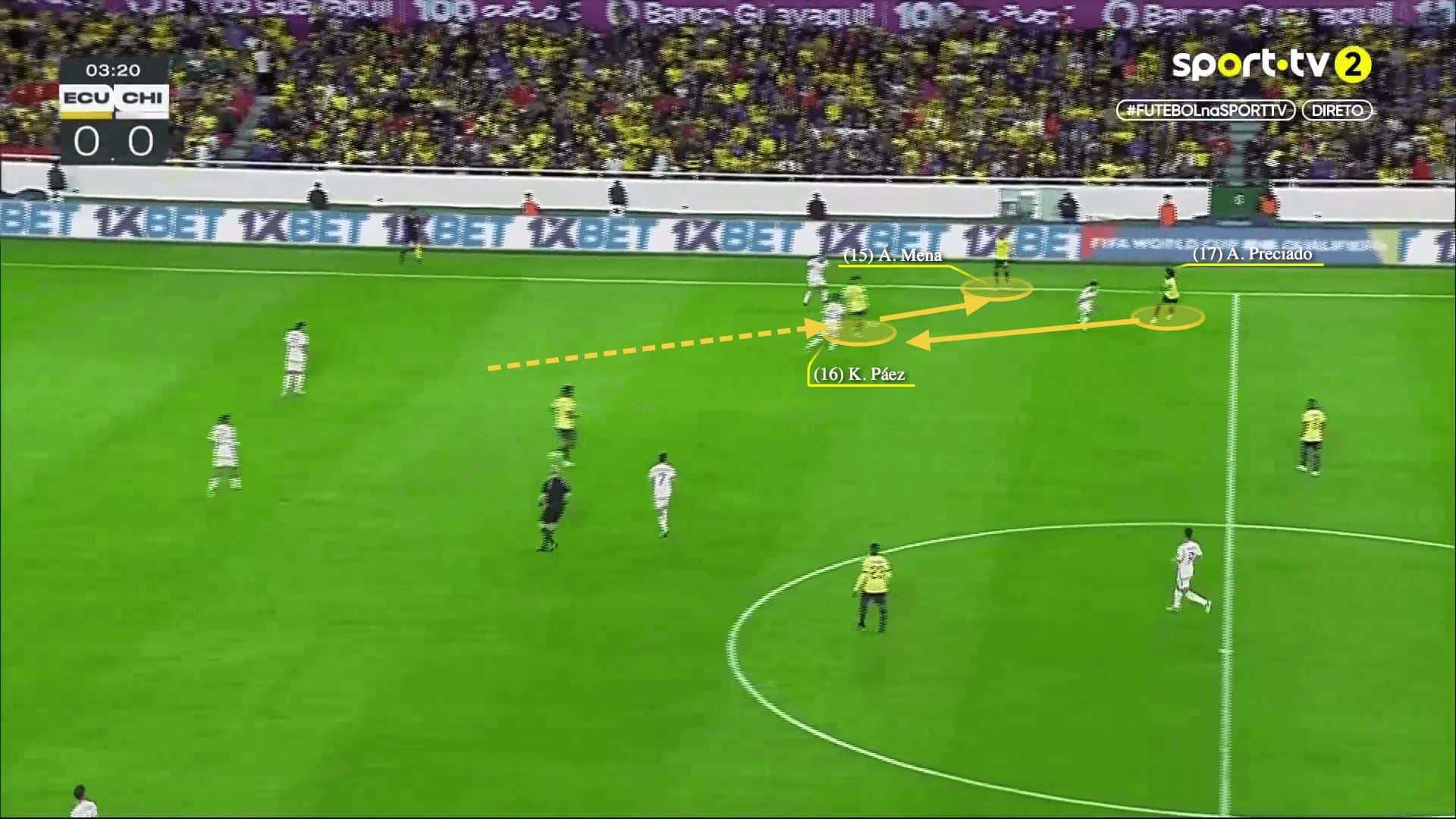
After Páez helps his side to escape from pressure and receive the opportunity to play the forward pass, the wide player, Mena, makes the run down the right flank after the full-back steps up.
Páez has the technical quality to receive the ball in tight spaces under control, and to play a wide range of passes both in small and big spaces with different parts of the foot.
His ability to release the wide player into space with the right weight of pass is a strong attribute, which gives wide players multiple opportunities per game.
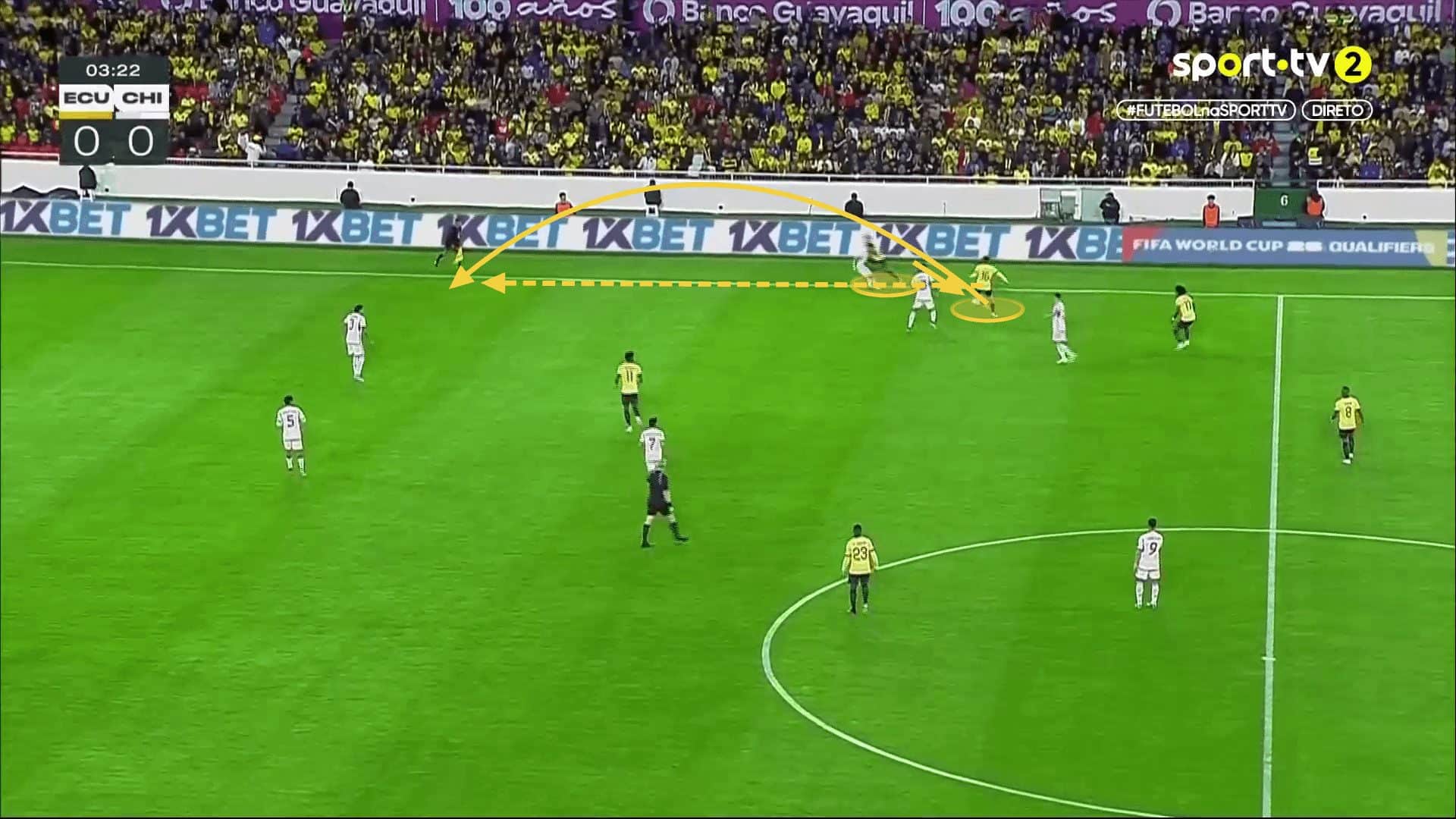
In the final third, we will see the same patterns of drawing the full-back out of their position before attacking the space around the defensive block.
In settled attacks, we will see the winger, Sornoza, in this particular example, staying wide, with Páez offering support horizontally and the left-back, Pacho, offering support from behind.
However, the players will rotate positions to maintain the structure when someone makes a run.
We can see here Páez positions himself nearby the full-back, acting as the winger before dropping deep to attract him out of position.
Pacho makes the run from deep into the area to take advantage of the space.
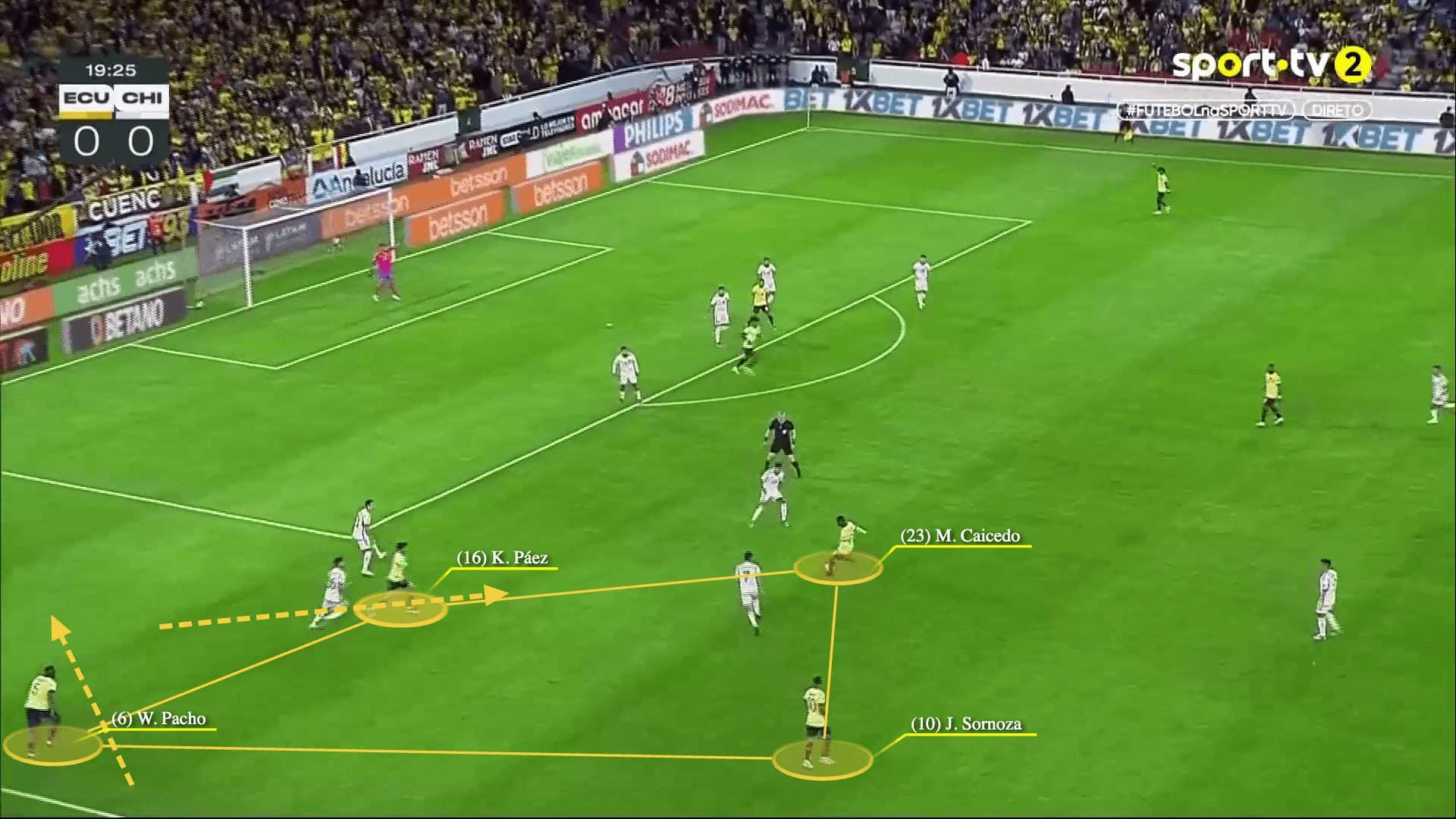
Defensive Phase
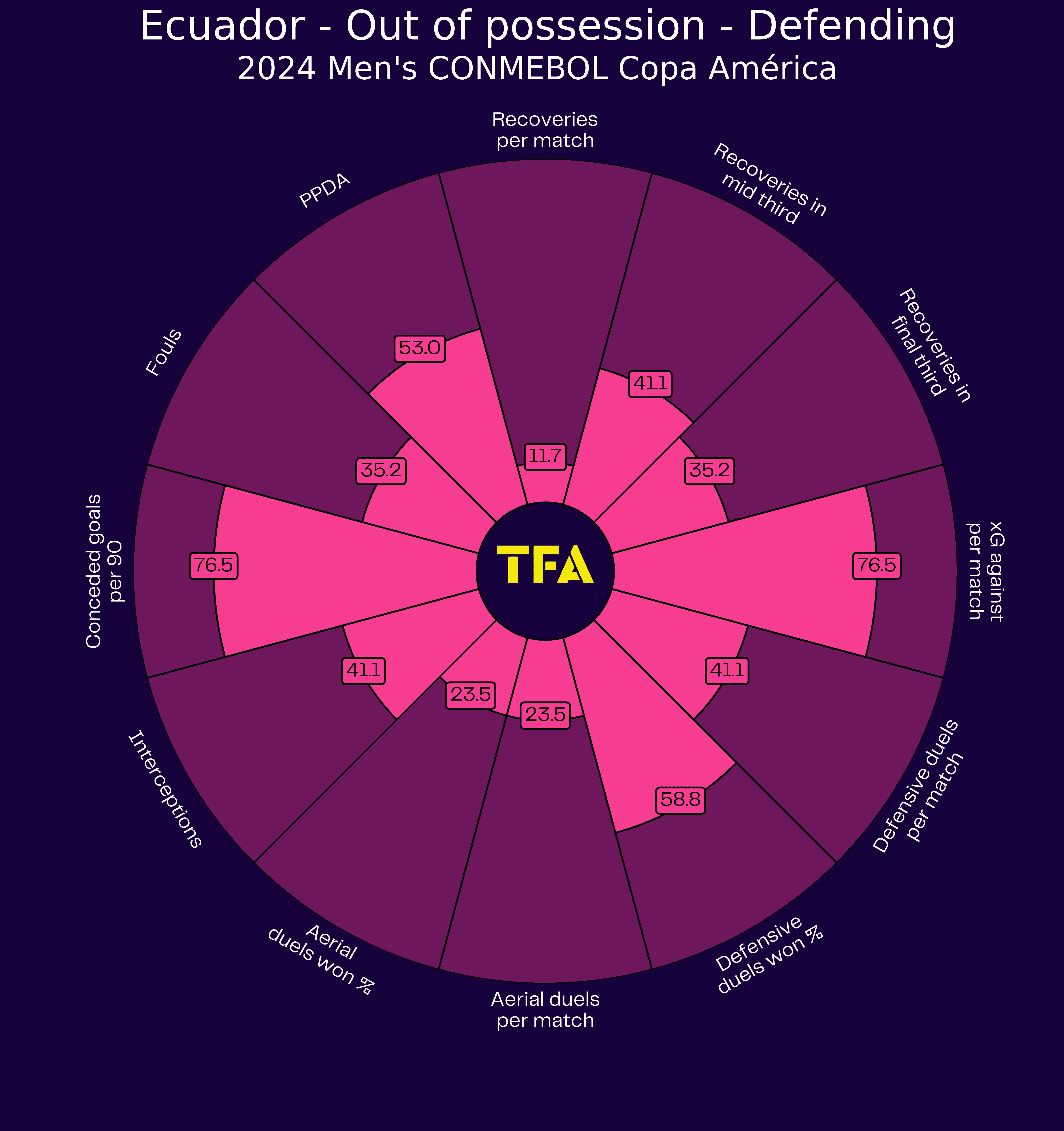
The out-of-possession graphic shows Ecuador’s defensive strengths.
We can see that they are in the 76th percentile for goals conceded and xG against per match, meaning that they concede few goals.
While their PPDA metric ranks them in the top half, suggesting they are a pressing team, the recovery statistics show the opposite.
The reason behind the mismatch in statistics can be a result of the game state, where Ecuador are aggressive at the start of games but ease off when they score to protect their lead.
In their 4-2-3-1 shape, Kendry Páez will step up to join the striker in the press, but only after making his starting movement when next to an opponent.
The intent is for both strikers to cut off the passes to the midfield pivot.
The near-side player then presses the central defender while using the angle of his run to prevent the pass from being made to that pivot player.
They force the opposition to pass the ball backwards and force long balls to then engage in man-marking across the pitch.
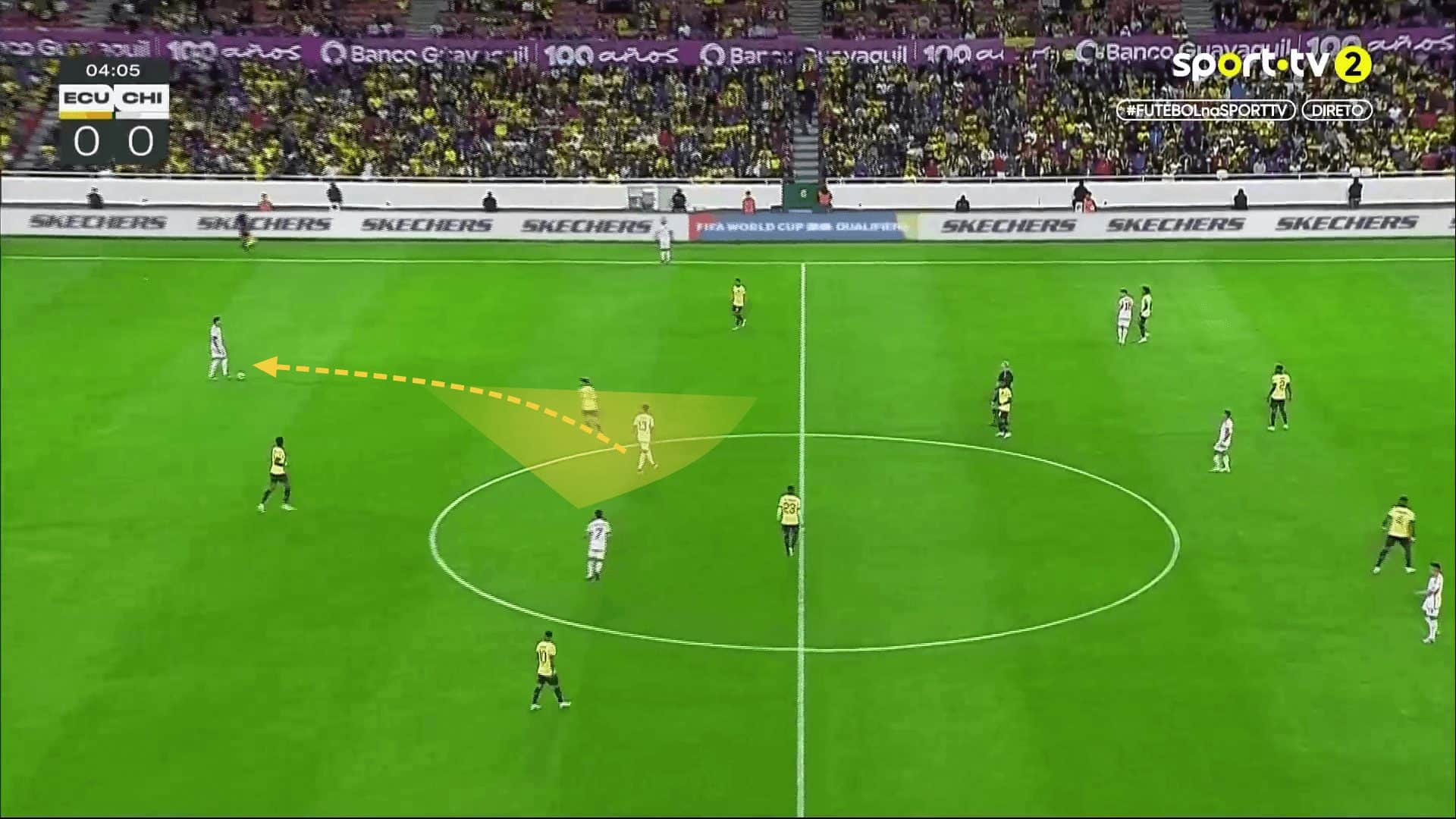
We mentioned that the intent is to force longer passes and man-mark opponents across the pitch.
Man-marking across the pitch means the back four is left in 1v1 situations, which can leave defenders in trouble.
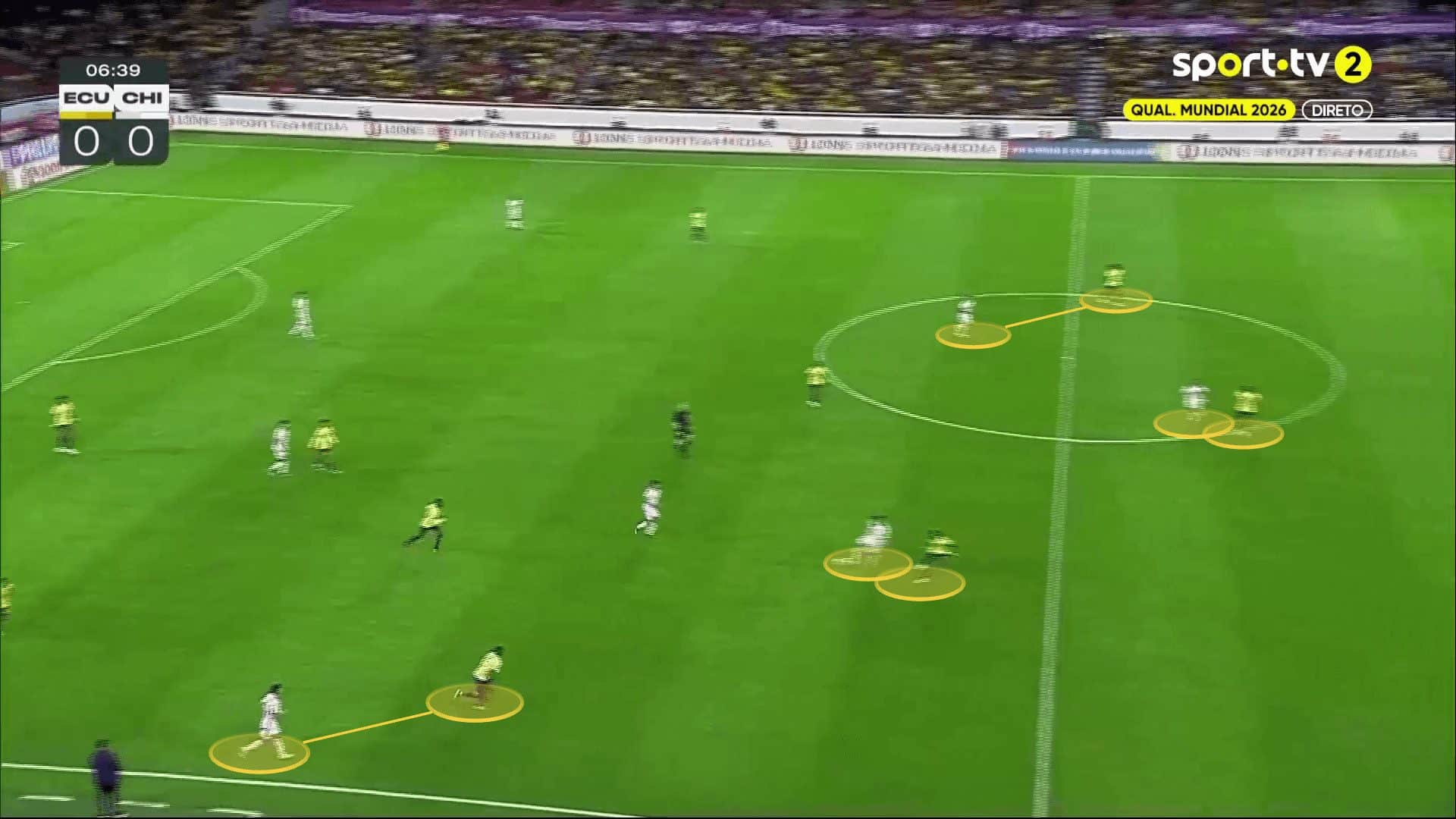
The defenders step up from their positions to follow the attacker they are meant to be man-marking.
As a result, they can be left vulnerable across the defensive line, and to avoid being too open at the back, defenders are hesitant at times and hold their positions.
In the example below, the central defender out of the three holds his position instead of stepping up to prevent the gap from being too big between the other defenders.
The attacker can drop into the space without the defender tracking him, giving him time to turn on the ball and drive at the defensive line.
During the press, when the line is high, and a player is given space between the Ecuador midfield and defensive unit, there is too much space for the defenders to cover as the opponents are able to make runs into the space behind, with no one available to put pressure on the ball carrier.
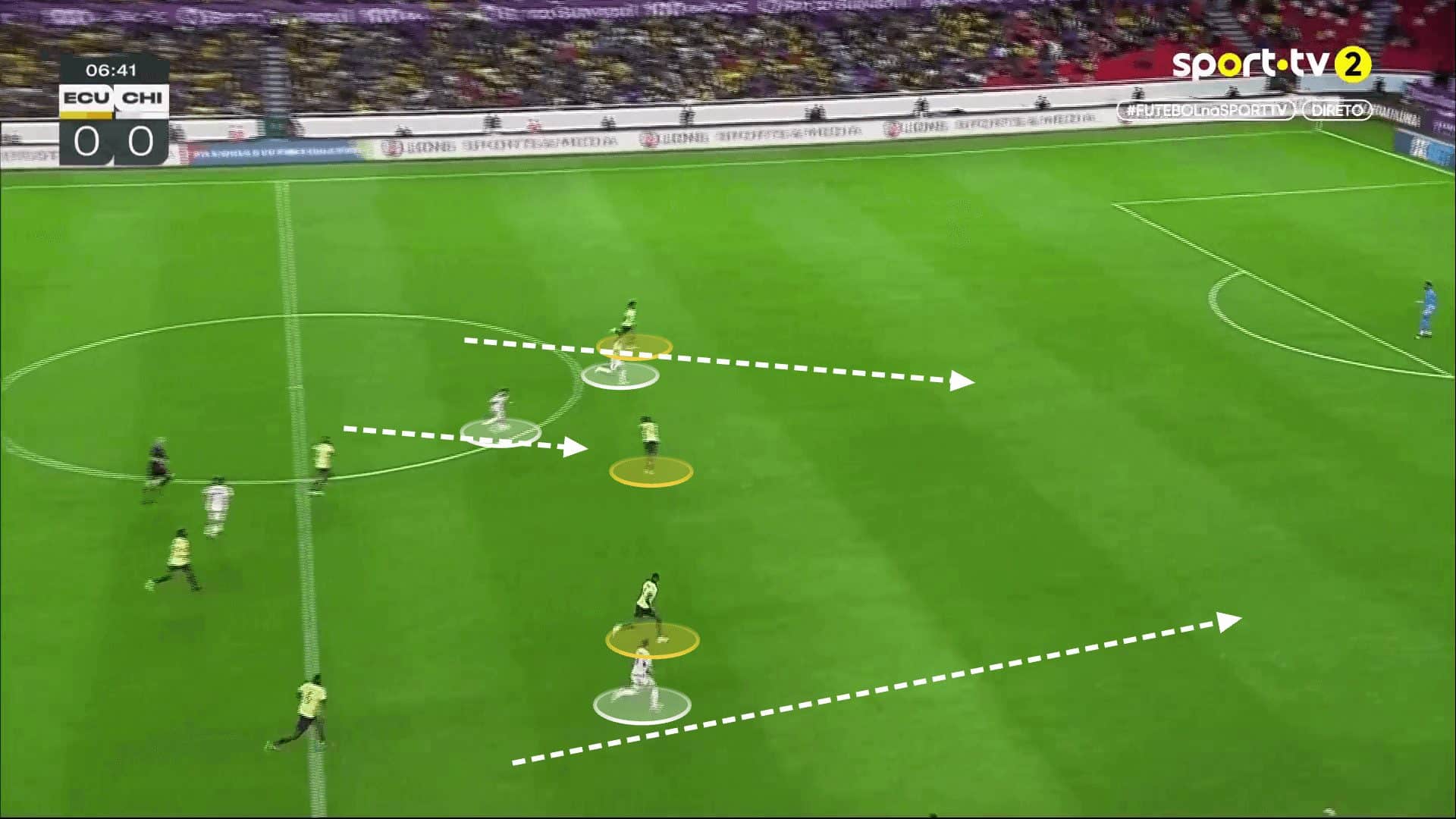
When Ecuador come up against tougher opponents, they respect the quality and cover the large gaps that are more likely to appear when they face higher-quality players who are more likely to retain the ball under pressure.
The 5-3-2 shape allows defenders to step up to track attackers and still have adequate cover at the back.
In the low block, which we are likely to see when Ecuador defend their lead or face tough opposition, we will see them sit in a narrow, compact shape that funnels the ball down the wide areas where the wing-back, wide central defender and midfielder all work together to cover space in the wider areas.
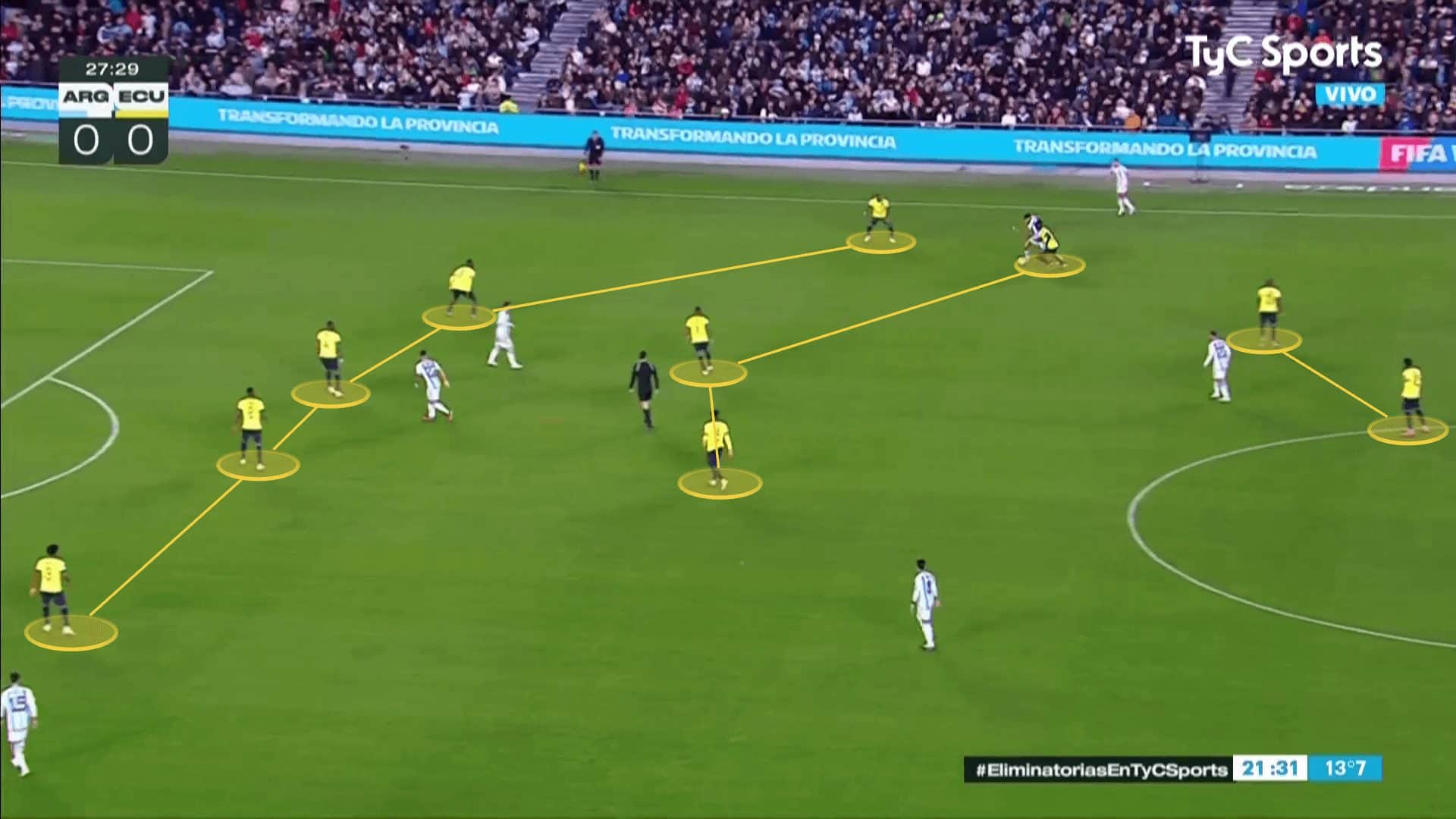
Ecuador will likely attempt to win the ball back in high areas regularly unless they face one of the tournament’s favourites.
They will look to step up to close down the ball and force high turnovers until they move into a winning game state when they will focus on defending the deeper areas and preventing opponents from finding space behind them.
Transitions
During their high press, we can expect Ecuador to regularly pick up the ball in the opposition half while the opponents are spread out, which will enable them to find lots of gaps between the defenders.
They will be able to regularly create chances through their press, which has led to a number of their recent goals in World Cup qualifiers.
When Ecuador defend deeper, the ball carrying from the likes of Caicedo will be crucial to their success.
In the image below, Caicedo can evade tackles under pressure and the balance to continue driving with the ball in those circumstances.
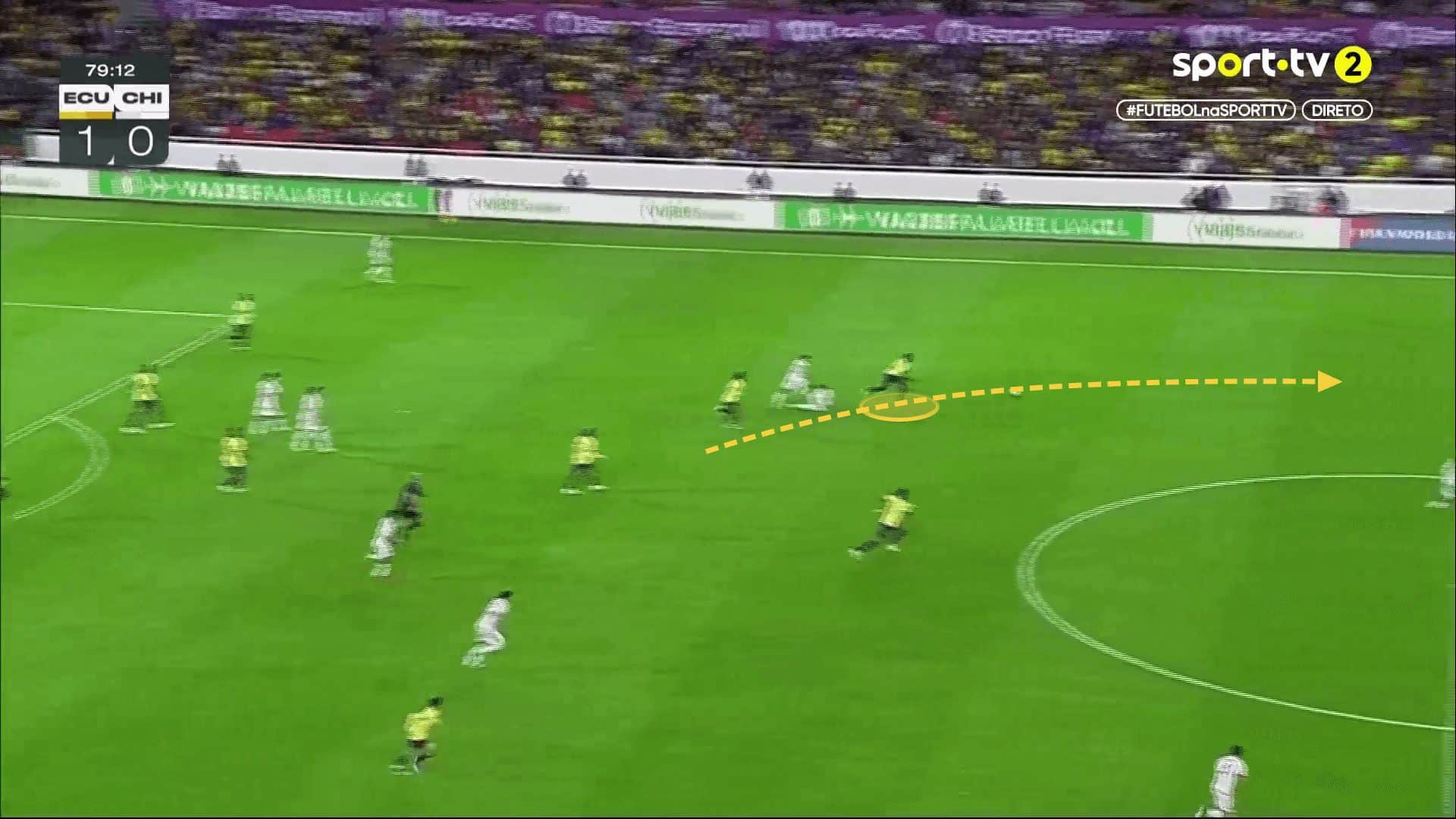
Caicedo will regularly carry the team into the final third, before releasing one of the wingers into the space in the wide channels they like to attack before a cross is made across the box.
Forwards
Jordy Caicedo and young Allen Obando are the backup players to the centre-forward role and may see game time increase if Ecuador shift to their 5-3-2 as expected at a later stage in the tournament.
However, at the moment, the spot is expected to fall to Rodriguez until Valencia recovers from injury.
Midfielders
The wide positions are up for grabs and could fall to any of the other players expected to be called up to the squad.
Alan Minda, for example, is likely to feel aggrieved at being left on the bench after a promising season at Belgian club Cercle Brugge.
At the heart of the pitch, in midfield, Ortiz and Alan Franco will provide backup options, but the Chelsea duo of Kendry Páez and Caicedo, as well as Gruezo, are unlikely to be displaced due to their overwhelming quality.
Defenders
The centre of the back line was tough to predict, with the likes of Piero Hincapié, who has just played a part in winning the Bundesliga with Bayer Leverkusen, expected to drop to the bench.
The full-back/ wing-back positions are likely to remain the same throughout, but either Hincapié or Robert Arboleda will be back-up at centre-back unless the team shifts to a back five.
Key Player
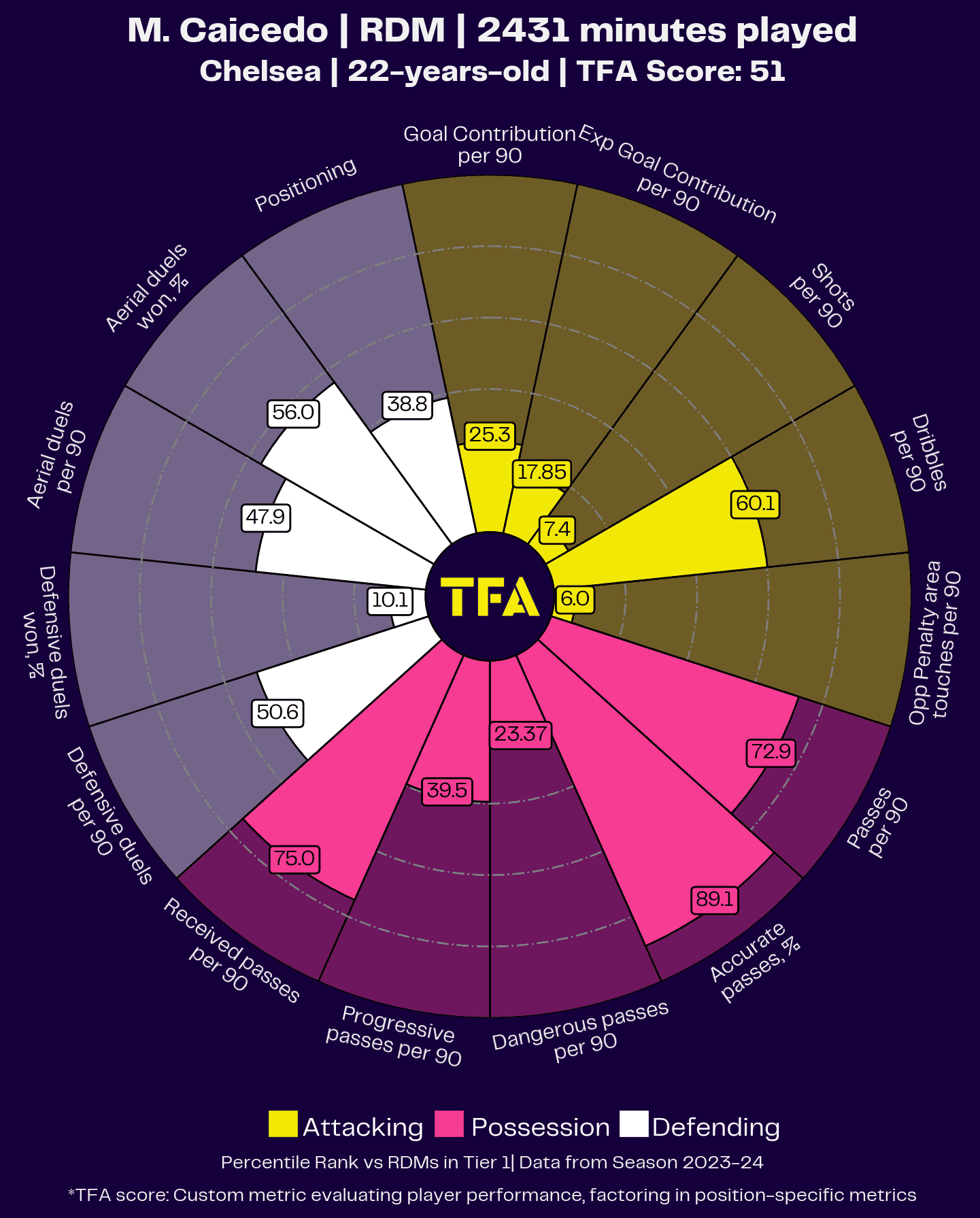
Moisés Caicedo will be Ecuador’s most important player.
As a defensive-minded midfielder, his out-of-possession skills will be and have consistently been the reason behind Ecuador’s stronger statistics in that aspect.
Ecuador have the security to sit deep and defend space, while Caicedo is given the freedom to attempt to win his tackles and begin counterattacks.
In transition, we have already mentioned his ball-carrying skills towards goal, but he also has the ability to cover large amounts of space while defending his goal and finding the right moment to dive in and recover possession for his team.
In possession, Caicedo is extremely important to Ecuador’s security on the ball.
He will offer for the ball and has the ability to evade pressure, no matter how often the waves come for him.
He is able to both keep it simple and move the ball side to side while also being able to play the killer pass in behind a defensive unit.
Caicedo will be key in giving Páez the opportunity to create chances while also covering his back if the nation loses the ball.
After a rollercoaster season for Chelsea, his statistics don’t make him shine, but they still tell us he is a player who loves to be on the ball, make passes for his teammates, and is one of the best passers in terms of accuracy.
He will often get stuck into defensive duels, and the dribbles per 90 stat shows that he will frequently carry the ball up the pitch, especially during counterattacks.
Tournament Prediction
Based on the analysis above, Ecuador’s setup is likely to be entertaining to watch, although it will depend on the system they use.
In a more aggressive team with a back four, they are more likely to press opponents high and create chances through that method, but they also have the option of shifting to a back five and shutting up shop.
Based on the quality of their group, we expect Ecuador to finish in second spot of group B, which will likely see them come up against the World Cup champions Argentina in the first knockout round, where we expect a similar result to that of the recent meeting in September where Ecuador lose out by one goal.

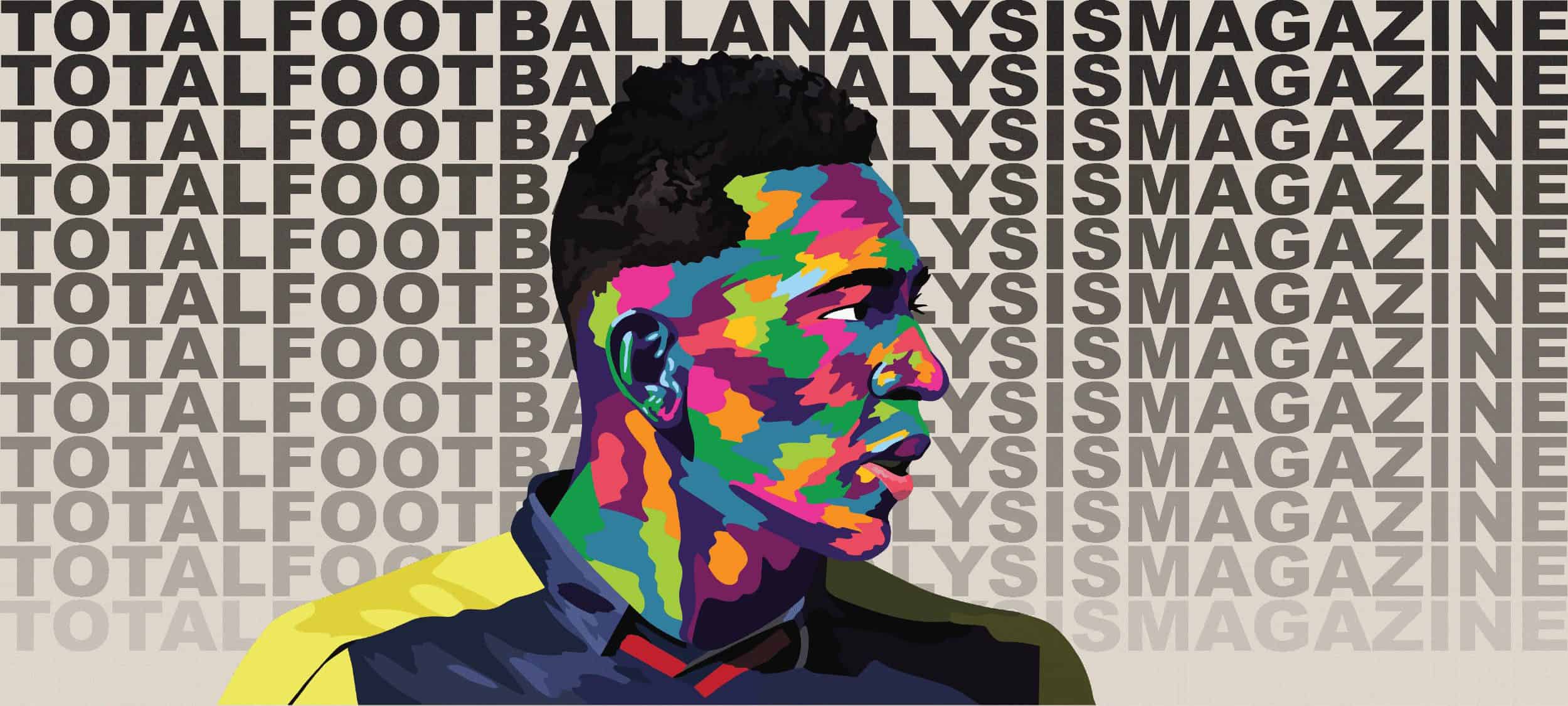




Comments